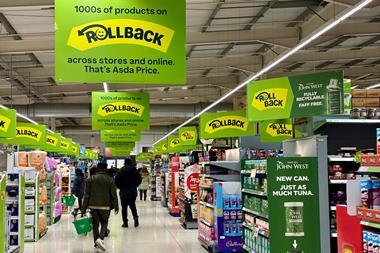Heavy promotional activity in the nation's dairy aisles appears to have done little to convince shoppers that the category offers attractive prices.
An exclusive Harris Interactive study for The Grocer shows 52% of consumers believe the price of cheese has gone up over the past year, with 48% believing butters and spreads have become more expensive and 43% thinking milk has become dearer.
Consumer perceptions of price were at odds with the actual prices of dairy products, said DairyCo market intelligence manager David Swales. The average price of branded Cheddar has decreased, from £6.26/kg to £5.91/kg over the past year, according to the latest data from Kantar Worldpanel for the year to 11 July 2010 (see this week's Dairymen supplement). Own-label and value Cheddar has also become cheaper.
Recently, the milk 'price wars' prompted by Asda's decision to reduce whole, skimmed and semi-skimmed milk to £1.25 have resulted in four pints of 1% fat being sold for as little as 50p a development that came after this year's poll.
The survey also shows that the economic downturn has actually had a bigger impact on the shopping habits of consumers this year than last year: 54% of respondents said they had changed their dairy shopping habits as a result of the economic climate, compared with 48% last year. Just over a third (34%) look out for cheaper or own-label products, up from 29% in 2009, while 13% spend less on dairy and 11% buy fewer products.
Shoppers aged 16 to 24 are most likely to have changed their dairy-buying habits 65% said they had changed the way they shop the category while those aged 55 to 64 are the least likely (42%).
As in 2009, price is the most important factor in consumers' purchasing decisions, followed closely by taste and quality. Nearly 90% of shoppers claim to buy at least some low-fat dairy products and 63% believe they taste as good as or better than full-fat products, but few believe a wider choice of low-fat products would encourage them to eat more. Just 27% of all respondents would eat more cheese if more low-fat options were available, although this rises to 38% for 16 to 24-year-olds.
The Dairy Council director Judith Bryans said there was a trend among younger people to eat more low-fat dairy products, helped by industry efforts to make low-fat options as tasty as possible. "Young people of this generation have grown up with low-fat dairy options in their diets. These teenagers and young people prefer the taste of low-fat and these are the options they seek," she said.
An exclusive Harris Interactive study for The Grocer shows 52% of consumers believe the price of cheese has gone up over the past year, with 48% believing butters and spreads have become more expensive and 43% thinking milk has become dearer.
Consumer perceptions of price were at odds with the actual prices of dairy products, said DairyCo market intelligence manager David Swales. The average price of branded Cheddar has decreased, from £6.26/kg to £5.91/kg over the past year, according to the latest data from Kantar Worldpanel for the year to 11 July 2010 (see this week's Dairymen supplement). Own-label and value Cheddar has also become cheaper.
Recently, the milk 'price wars' prompted by Asda's decision to reduce whole, skimmed and semi-skimmed milk to £1.25 have resulted in four pints of 1% fat being sold for as little as 50p a development that came after this year's poll.
The survey also shows that the economic downturn has actually had a bigger impact on the shopping habits of consumers this year than last year: 54% of respondents said they had changed their dairy shopping habits as a result of the economic climate, compared with 48% last year. Just over a third (34%) look out for cheaper or own-label products, up from 29% in 2009, while 13% spend less on dairy and 11% buy fewer products.
Shoppers aged 16 to 24 are most likely to have changed their dairy-buying habits 65% said they had changed the way they shop the category while those aged 55 to 64 are the least likely (42%).
As in 2009, price is the most important factor in consumers' purchasing decisions, followed closely by taste and quality. Nearly 90% of shoppers claim to buy at least some low-fat dairy products and 63% believe they taste as good as or better than full-fat products, but few believe a wider choice of low-fat products would encourage them to eat more. Just 27% of all respondents would eat more cheese if more low-fat options were available, although this rises to 38% for 16 to 24-year-olds.
The Dairy Council director Judith Bryans said there was a trend among younger people to eat more low-fat dairy products, helped by industry efforts to make low-fat options as tasty as possible. "Young people of this generation have grown up with low-fat dairy options in their diets. These teenagers and young people prefer the taste of low-fat and these are the options they seek," she said.

















1 Readers' comment